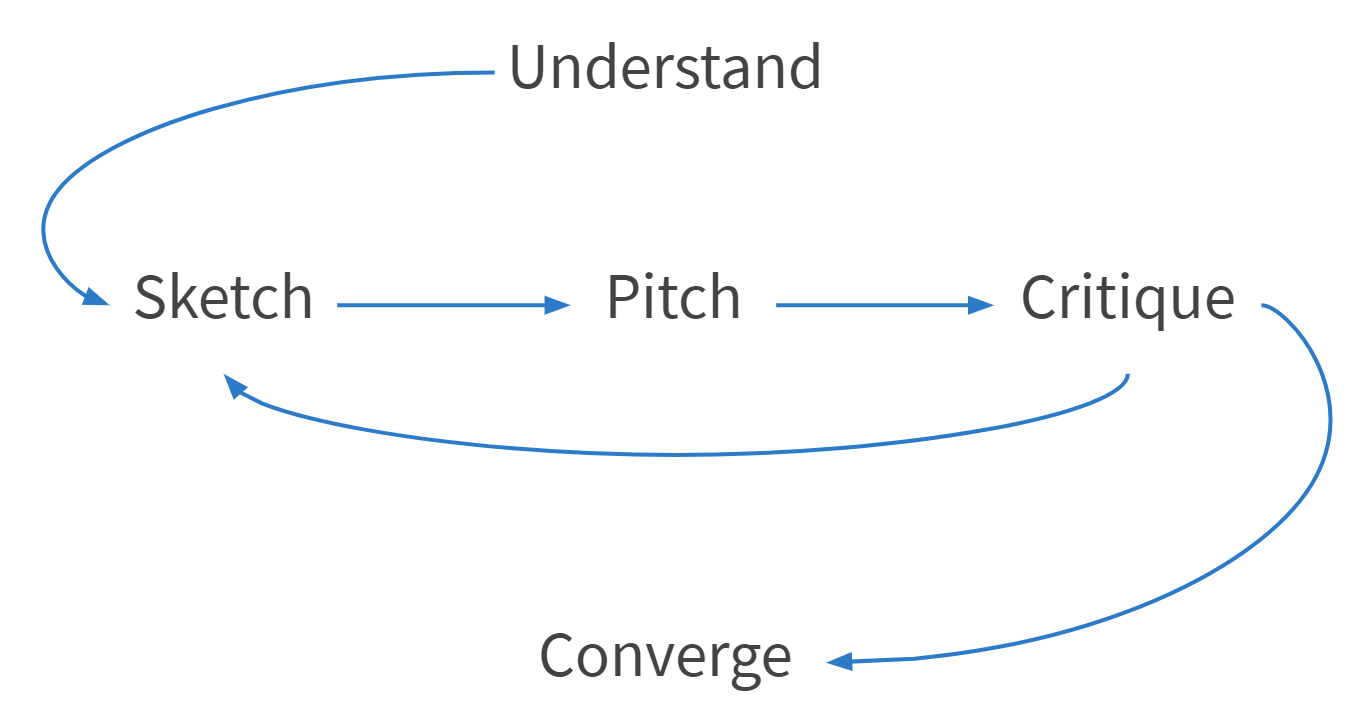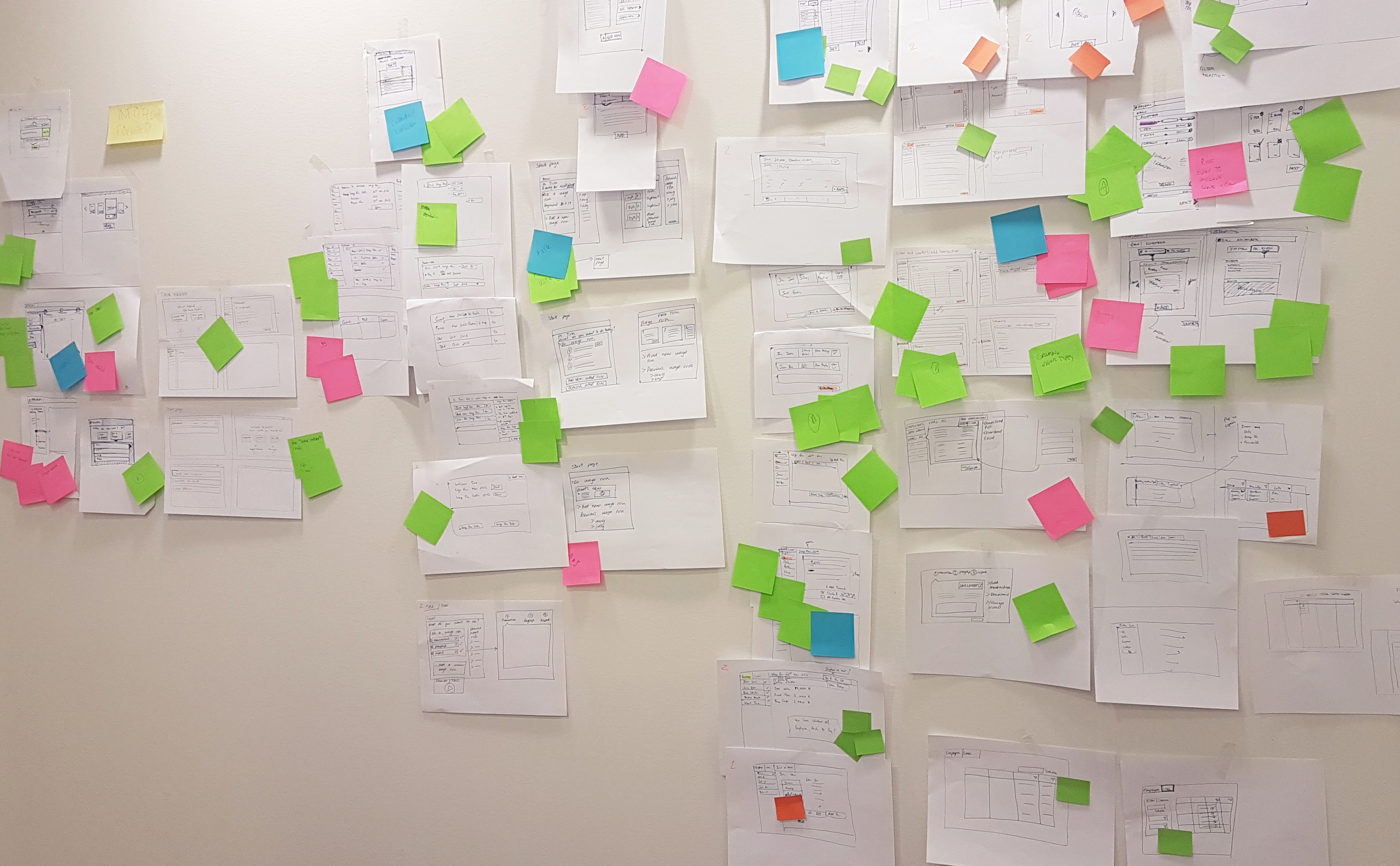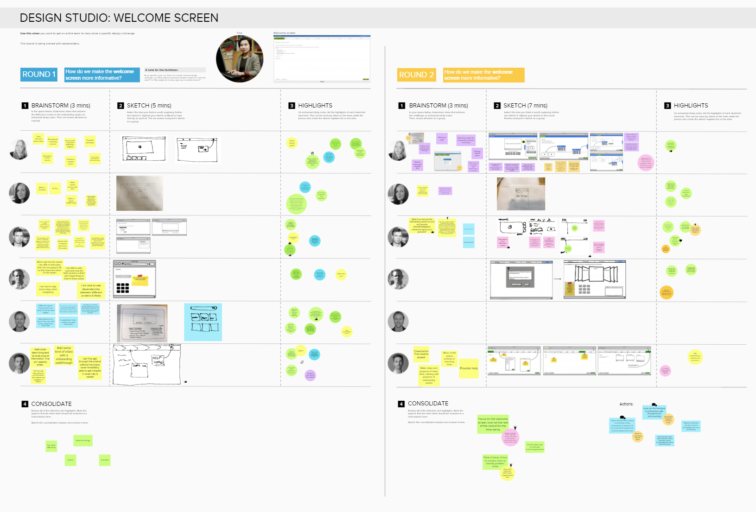Running collaborative design studios is a way to create a shared understanding of challenges within the team by involving everyone in the design process. It is also a way to increase engagement and create a sense of shared ownership of both challenges and solutions. This can potentially speed up the design process and bring the team closer together as a result.
There are many different ways of running design studios and trust me, I’m no expert on the subject, but I have gotten a few under my belt now. In my role as a UX Designer at Visma, a large part of my colleagues are located in other countries, which means I can’t meet them for physical workshops that often.
As a way of adapting to this reality I have run design studios both in-person and online, and I thought I’d share some pros and cons and my key takeaways in case you want to run a design studio with your team. But before I do that, I thought I’d give a short introduction to what a design studio is.
What is a design studio?
It is a collaborative way to generate many ideas and possible solutions to a challenge through sketching, iterating, and critiquing. So far, I find that the best ideas have been created when the group has been diverse, meaning that they have had different roles and perspectives, for example, a developer, business analyst, and service owner.
As mentioned before, the sessions can differ in setup and time. The latter has been even more evident when comparing a physical design studio with a virtual one.

The design studio process.
Physical vs virtual design studios
I think it’s worth mentioning that we should never underestimate the physical meeting. By gathering the team and doing something out of the ordinary together, we get energized and we get to know each other better which is immensely valuable.
I have found that by having everyone in a room together, it’s easier for me as a facilitator to get a sense of how everyone is doing. By that I mean that I can easily see if someone gets stuck and needs more information to go on or something to warm them up, whereas in a virtual meeting I would have to count on them to tell me.

A wall used for pitching and critiquing ideas during one of my physical design studios.
I have also found that the conversations around ideas take very different shapes in person, compared to online. When sitting in a room together, we can easily point to the thing we are talking about, and if the conversation drifts it’s fairly easy to get back on track.
However, when sitting in different countries looking at our screens, it is much more challenging to explain ideas, and not to mention much more disruptive to just “jump in” to comment or ask a questions. This makes for more time lost if someone has misunderstood the challenge or widened their scope.
Overall, I find that it asks a bit more of me as a facilitator and I have found that the challenge statement needs to be even more clear when the design studio is run virtually, than it has to be when we meet in person.
When it comes to the process of giving feedback on the ideas of others, I have found that most participants take initiative when we are in a room together. When doing this online, I find that I need to ask them to give feedback on the ideas presented. However, I have also seen that some participants seem to find it easier to give feedback to their colleagues when they are not in the same room.
The biggest difference between running design studios virtually and physically, I would say, is the amount of time spent. Sitting in a room together can be quite time-efficient, at least if the facilitator is somewhat strict.
Meeting online will require more time as the team has do perform extra steps like introduce the team to a new tool, upload photos of sketches or ex. Balsamiq sketches, while also doing all of the things we would do in person, i.e. writing notes, pitch and critique.
However, there is a benefit to doing this online. Everything is documented and accessible to all participants right away, which saves time from the work which the facilitator otherwise has to do after the session. Another pro is how simple it is to record the session online as it requires less to no additional equipment.

The biggest con to running the design studio physically is the cost of organizing it, at least if you work with a team spread out in multiple countries like I do. In that sense a virtual design studio is both cheaper and more time-efficient as it doesn’t require anyone to travel.
In conclusion, I prefer to run physical design studios and meet up with the team. But for those times when I can’t meet up with them and need input in my design process, running a virtual design studio is gold.
Frequently getting their input inspires me and we learn a lot from each other. I have also seen that the team uses sketching more to explain their ideas after being introduced to the method, which helps our everyday communication. A big win.
To finish up this post, here are my key takeaways
- Expect the process to take more time when performed online.
- Select a tool that is fairly straightforward (and remember to demo it to your team).
- It is easier to perform a design studio virtually with participants who have participated in one physically and have an idea of how it works and feels.
- Your challenge statement needs to be specific and detailed, even more so online than if you meet and work together in person.

